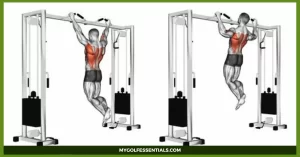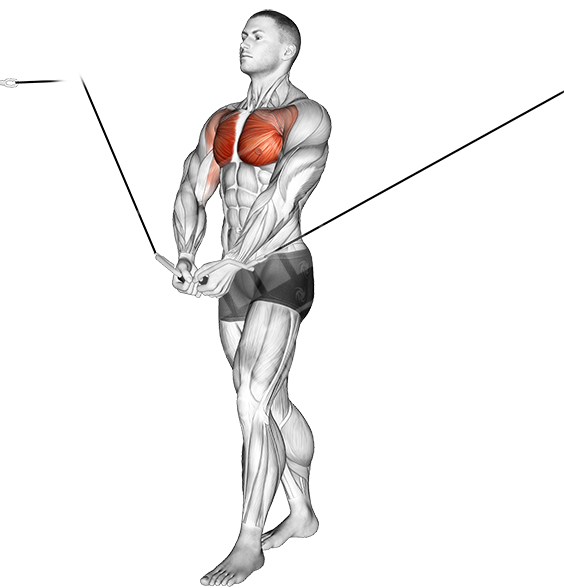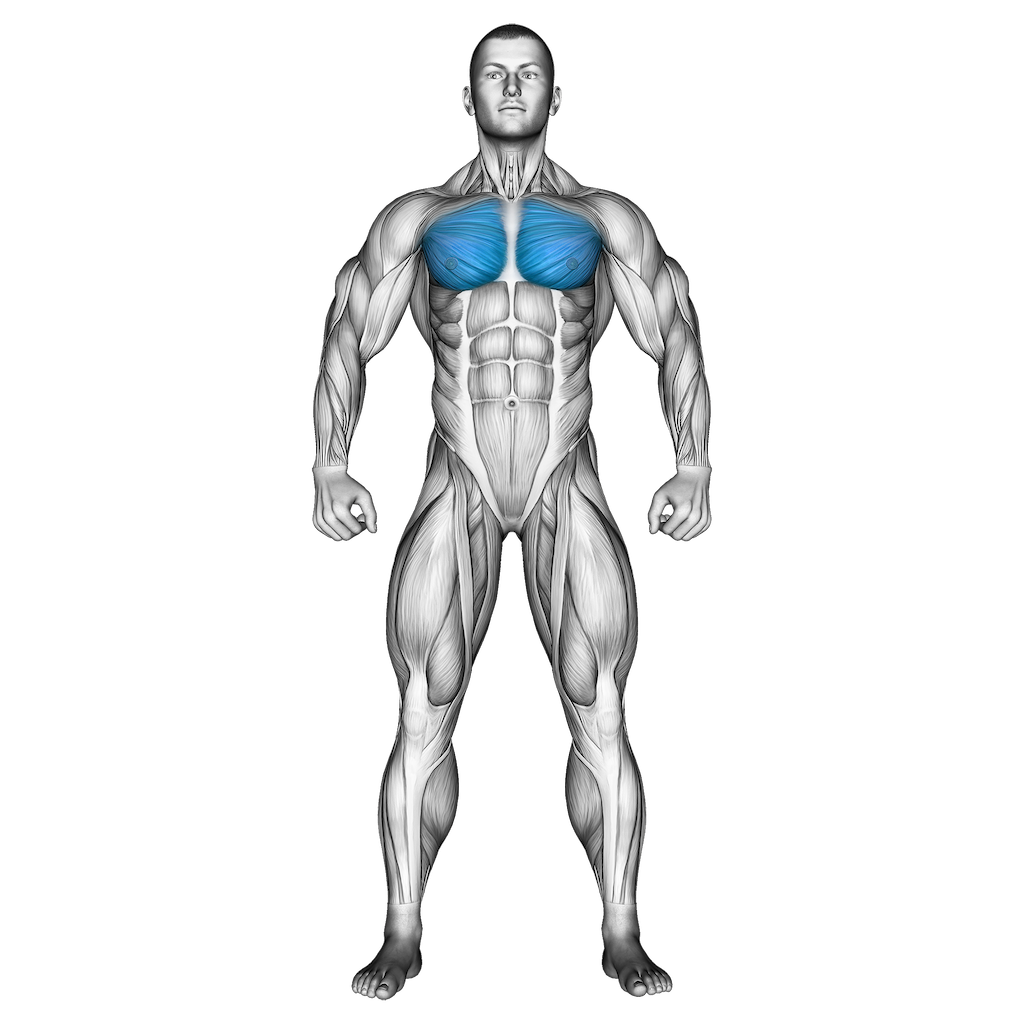Pull Day Workout

Are you ready to level up your pull-day workout? Whether you’re looking for more challenging and dynamic exercises or just the perfect routine to suit your fitness goals, there’s a wide variety of pull-day workouts available online. From warm-ups to strength conditioning drills, this article will take you through all the key elements of a successful pulling workout session.
So, no matter if you are an advanced lifter aspiring for intense gains or just beginning on your fitness journey, these solutions can help you get the most out of every set! Read on to learn more about the latest pull day trends and find tips that will have you mastering each rep with ease.
Understanding the Basics of a Pull Workout
A pull-day workout in a fitness routine primarily targets the muscles involved in pulling actions. These include the back muscles, biceps, hamstrings, and certain core muscles. Such workouts are key to achieving a balanced physique, as they complement push-day routines, which focus on the body’s pushing muscles.
By performing a variety of pulling exercises, you can improve your body’s overall strength, muscular balance, and posture. Remember, whether you are a beginner or an advanced fitness enthusiast, it’s crucial to learn and execute pull exercises with proper form to prevent injury and maximize gains.
Learn how to adjust the intensity of your workout to make it more or less challenging
One way to adjust the intensity of your pull-day workout is by manipulating the weight and rep range. For a more intense session, you can increase the weight while reducing the number of reps. Conversely, for a less challenging workout, decrease the weight and increase the reps. Remember, it’s crucial to maintain proper form regardless of the intensity level.
Another method is to introduce different variations of pull exercises, which engage different muscle groups and can either increase or decrease the difficulty, depending on the variant chosen.
Lastly, altering the rest periods between sets can also impact the intensity. Shorter rest periods can intensify your workout by keeping your heart rate elevated, burning more calories, and increasing metabolic stress. Lengthening the rest period, on the other hand, allows for more recovery time, reducing the overall challenge.
Always listen to your body and adjust the workout intensity to align with your fitness goals and physical condition. Your pull-day workout should be challenging but never to the point of risking injury.
The Pull Day Workout Routine
A pull-day workout targets muscles involved in pulling exercises. This typically includes the back, biceps, and hamstrings. Structuring your workout routine with specific days dedicated to pushing, pulling, and leg exercises is a preferred method for many fitness enthusiasts due to its effectiveness in muscle isolation and recovery.
Pull-day exercises often involve movements such as pull-ups, rows, and reverse flies, all of which engage the back muscles. Hammer curls and regular curls are also commonplace, targeting the biceps. For the lower body, exercises like deadlifts and hamstring curls are included.
Incorporating a pull day into your workout routine can lead to significant improvements in strength, muscle growth, and overall fitness. However, it’s crucial to remember that proper form, adequate rest, and a balanced diet are equally important in achieving your fitness goals.
Deadlift
The deadlift is a quintessential barbell compound exercise that targets virtually your entire body, with an emphasis on your posterior chain, which includes the lower back, glutes, traps, hamstrings, and grip. It’s unparalleled in building “real-world strength.” In fact, it’s often the top pick for the hypothetical question: “If you could only perform one exercise for the rest of your life, what would it be?”
The barbell deadlift is challenging but incredibly effective, working most of your back muscles in a single movement. This makes it an excellent choice as the first activity on your pull-day workout.
To execute the deadlift with proper form, follow these steps:
- Stand close to the bar, positioning it over the middle of your foot.
- Keep your feet hip-width apart.
- Inhale and lean forward to grip the bar.
- Hold your breath, brace your core slightly, and lift the bar.
- Keep the bar close to your body, maintaining a straight back until you are standing upright.
- Lower the bar back to the ground with control.
- Take another breath and repeat for reps.
Alternative exercises include the Romanian deadlift, back extension, and kettlebell swing.
Barbell Row
The Barbell Row, also known as the bent-over row, is a time-honored compound exercise that targets multiple back muscles concurrently. This robust workout focuses primarily on the lats, trapezius, and rear deltoids, with secondary benefits to your biceps, lower back, and grip strength.
It effectively complements the bench press by working many of the antagonistic muscles, thereby helping to maintain a balanced muscle strength across your upper body. To ensure maximum benefit and safety, it is paramount to maintain proper form. Avoid excessive swinging or using momentum, which can inadvertently shift the workload to the glutes and lower back.
How to Do Barbell Rows:
- Stand with your feet shoulder-width apart.
- Grip the bar with an overhand grip.
- Lean forward from your waist, allowing the bar to hang from straight arms.
- Inhale, then pull the bar towards your torso.
- Aim to pull the bar as high as possible, ideally touching your abs or chest.
- Lower the bar back to the starting position with control, ensuring a full range of motion.
Alternative Exercises:
If you wish to vary your routine or don’t have the necessary equipment, consider the following exercises:
- Dumbbell Row
- Seal Row
- Cable Row
Lat Pulldown
The lat pulldown, a cornerstone of any pull day workout, targets a myriad of muscle groups, notably the lats, biceps, grip strength, and rear deltoids. Here’s a step-by-step guide to ensure proper form and maximum muscle engagement during your lat pulldown:
- Adjust the Thigh Pad: Make sure the thigh pad fits snugly against your thighs. This will help anchor your body and prevent it from lifting off the seat during the exercise.
- Secure Your Grip: Grasp the bar using an overhand (pronated) grip. Your hands should be placed slightly wider than shoulder-width apart. Feel free to adjust the grip to suit your comfort level, although a wide overhand grip is generally recommended.
- Position Yourself: Sit under the pad with your thighs firmly secured. Maintain an upright posture with your chest raised and eyes focused on the bar.
- Pull Down: Engage your muscles and pull the bar down towards your chest, leading the movement with your elbows. Continue pulling until the bar is either below your chin or touching your upper chest.
- Hold and Release: At the bottom of the movement, squeeze your shoulder blades together and hold for a moment. Exhale as you slowly release the bar back to the starting position.
Dumbbell Row
The single-arm dumbbell row is a renowned exercise favored for its effectiveness in toning the mid-back and rear shoulders. As a member of the rowing exercises family, it primarily engages your latissimus dorsi (lats), trapezius (traps), and rear deltoids, with your biceps and grip muscles serving a secondary role.
How to Do Dumbbell Rows
- Position a dumbbell on the floor next to a bench or chair.
- Stand facing the bench or chair and place your left hand and left knee atop it.
- Keep your back flat and parallel to the floor, slightly bending your standing leg.
- Firmly grip the dumbbell with your right hand.
- As you inhale, pull the dumbbell upward, driving your elbow toward the ceiling.
- Exert control while lowering the dumbbell to its starting position, exhaling as you do so.
- Complete the desired number of reps on one side before switching to the opposite arm and leg.
Lat Pulldowns
Lat pulldowns are an excellent exercise for targeting your latissimus dorsi, often referred to as ‘lats.’ These are the large muscles found on either side of your back and contribute to achieving that desired V taper. For those focusing on developing a strong and well-defined back, incorporating lat pulldowns into your exercise regime is highly recommended.
To execute this exercise correctly, begin by settling into a lat pulldown machine. Bend your knees and ensure your feet are flat on the floor. Extend your arms and take hold of the bar, positioning your palms to face away from your body and setting your hands shoulder-width apart. Proceed to pull the bar down to your chest level while maintaining a straight back and keeping your elbows tucked in. Gradually return the bar to the starting position and repeat for the planned number of repetitions.
A piece of advice to remember is to extend your arms fully at the top of the movement, as this activates your lats to their maximum capacity. The bar should always come down to the level of your upper chest before you initiate another repetition.
However, a common mistake to avoid is opting for weights that are too heavy. This often leads to the use of momentum to aid in pulling the bar down, which diminishes the effectiveness of the exercise in activating your lats. Always prioritize proper form and control throughout the entire movement over the weight lifted.
Face Pull
The Face Pull is a vital exercise for a pull day workout, mainly targeting your rear deltoids, rotator cuffs, and upper trapezius muscles, which are commonly neglected in many workouts. Proper form is critical to reap the full benefits of this exercise and prevent potential injuries.
To perform a Face Pull, start by fastening a rope handle to a high position on a cable pulley. Your grip on the ropes should be overhand. Distance yourself a step or two from the cable pulley for some tension. Keep your elbows high as you pull the rope towards you, allowing your upper arms to move straight out towards your sides as your forearms rotate upwards.
Control your movements as you return to the starting position, letting your arms move forward again. However, there are other variations of this exercise, including the Barbell Rear Delt Row, the Cable Rear Delt Row, and the Dumbbell Rear Delt Row. Incorporating these exercises into your pull-day workout can promote muscular balance and strength in your upper body.
Barbell Curl
The barbell bicep curl stands supreme as the king of bicep exercises. Simple in design yet immensely effective, it focuses on strengthening and growing your biceps, as well as the underlying brachialis muscle.
For optimal results, keep your elbows slightly in front of your shoulders or, at the very least, by your sides; this prevents them from drifting back and ensures your biceps are doing the heavy lifting. Remember, prioritize form over weight. By squeezing your biceps and slowly lowering the bar back with control, you’ll build an enviable bicep pump.
How to Barbell Curl
- Grip a bar with an underhand grip (supinated), hands about shoulder-width apart.
- Lift the bar with control by flexing your elbows.
- Keep your upper arm stationary during the curl, either at your side or slightly forward.
- Reverse the movement and lower the bar back to the starting position.
Alternative Exercises
- Dumbbell Curl
- Cable Curl With Bar
- Machine Bicep Curl
Preacher Curl
The final exercise in our pull day workout is the preacher curl. Primarily aimed at isolating the biceps, the preacher curl facilitates an intense focus on this muscle group. The greatest resistance is placed on your biceps when they are in a lengthened state, a method shown to yield significant muscle growth.
Starting with lighter weights is recommended, and one can gradually increase the weight load from there. Alternative exercises to consider include the Dumbbell Preacher Curl and the Concentration Curl.
The Number of Reps
As previously detailed in our pull-day workout routine, the goal is to target a range of 5–15 repetitions per set across all exercises. Compound exercises, which engage multiple muscle groups, will generally involve heavier weights and fewer repetitions, thereby leaning towards strength development.
Conversely, isolation exercises, which focus on a single muscle group, will typically involve lighter weights and a higher number of repetitions, tilting the scale towards muscular hypertrophy. This broad repetition spectrum allows for the enhancement of both muscle size and strength.
However, it’s important to note that these are guidelines and not rigid rules. Individual adjustments can be made to the repetition numbers based on personal comfort and requirements. The focus should always be on giving your best and systematically improving your training over time. Further details on this topic will follow.
Rest Periods for Optimal Results
The principle of resting adequately between sets is crucial for achieving optimal results in your pull-day workout. A rest period of two to three minutes strikes a favorable balance between adequate recovery time and a more efficient workout session. It would be best if you rested long enough to maintain the correct form, desired weight, and planned number of repetitions in the succeeding set.
Interestingly, the research underscores the benefits of longer rest periods (three minutes or more), leading to more significant muscle and strength gains compared to shorter rest periods (one minute or less)—given that the number of sets remains constant. This is attributed to the fact that longer rest periods enable us to perform more repetitions in the following sets, which translates into more training and, thus, more stimulation for muscle growth.
However, if you’re short on time or feeling restless, aim for at least a two-minute rest period between sets. This would allow you to recover approximately 95% of your power and significantly improve your performance compared to rest for just one minute.
FAQs
How many sets should I do in a pull-day workout?
For each exercise in the pull day workout, you should aim for two to three sets. This distribution gives you a total of eight primary work sets for your lats, eleven for different regions of your trapezius, three to six for your lower back, ten for your rear delts, and four primary plus eight secondary work sets for your biceps.
How long should I rest between each set?
The principle of resting adequately between sets is crucial for achieving optimal results in your pull-day workout. A rest period of two to three minutes strikes a favorable balance between adequate recovery time and a more efficient workout session. It would be best if you rested long enough to maintain the correct form, desired weight, and planned number of repetitions in the succeeding set.
What type of grip should I use for barbell curls?
When performing barbell curls, you should use an underhand grip (supinated), hands about shoulder-width apart. This is the most effective way to target your biceps and maximize your pulling muscles results. It is also important to keep your upper arm pull up bar stationary during the curl, either at your side or slightly forward.
What is the best way to ensure the correct form?
Proper form arms straight is essential for maximizing results, minimizing injury risk, and ensuring that you get the most out of your workouts. Start each exercise by standing up straight with your feet knees slightly bent shoulder-width apart and ensuring your head is in line with your spine. When performing the actual movement, try to focus on feeling the muscle being worked and make sure your shoulders are back and down when possible.
What should I do if I can’t finish the desired number of reps?
If you are unable to complete the desired number of upper-body muscles repetitions in a set, it is recommended that you reduce the weight for the remaining sets. This will ensure that you remain within your target rep range pull workouts and are able to complete the remaining sets with the correct form.
Conclusion
I hope that this article has helped you become more aware of the intricacies of pull-day workouts and that you are now better equipped to take on your next session with confidence. Remember, pull days are all about balance, so focus on engaging multiple muscle groups while exercising safely and efficiently.
It won’t be long before you can master the perfect pull-day workout! Be sure to take the necessary rest periods between sets and adhere to proper form at all times.



